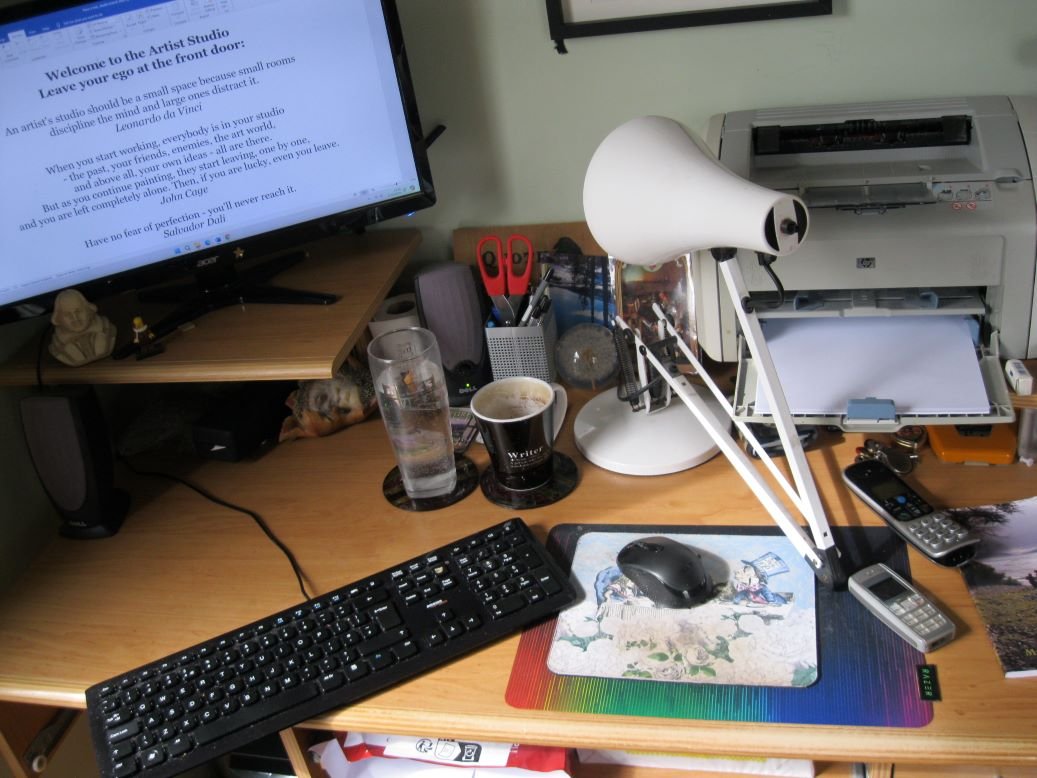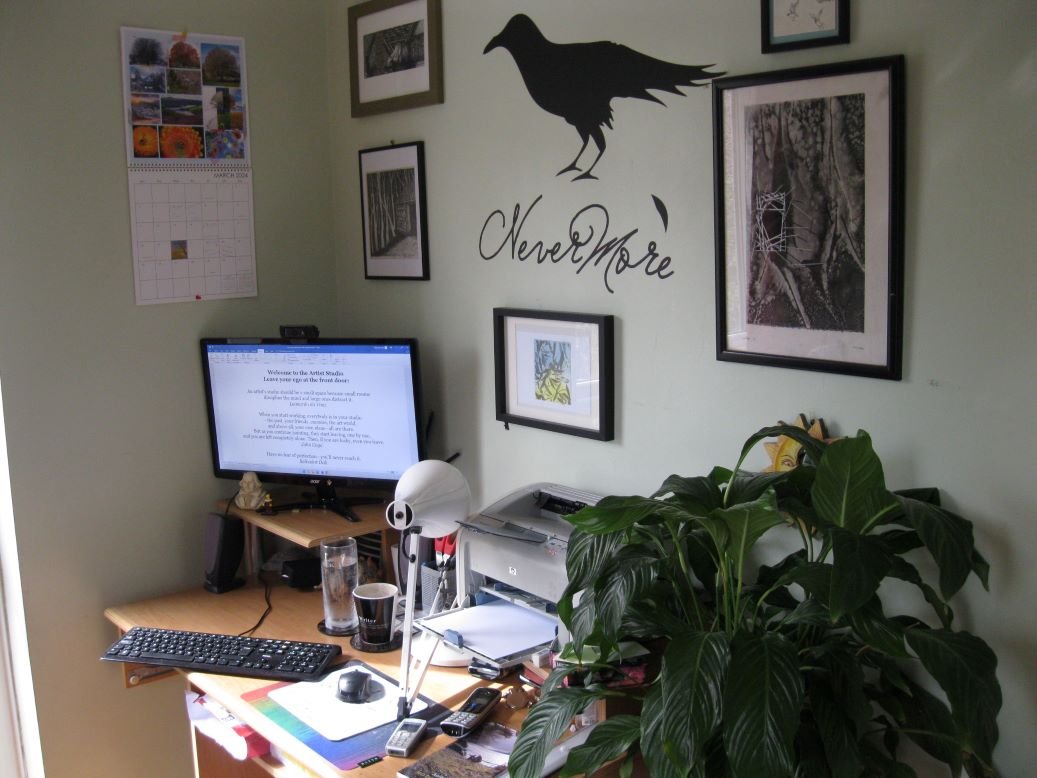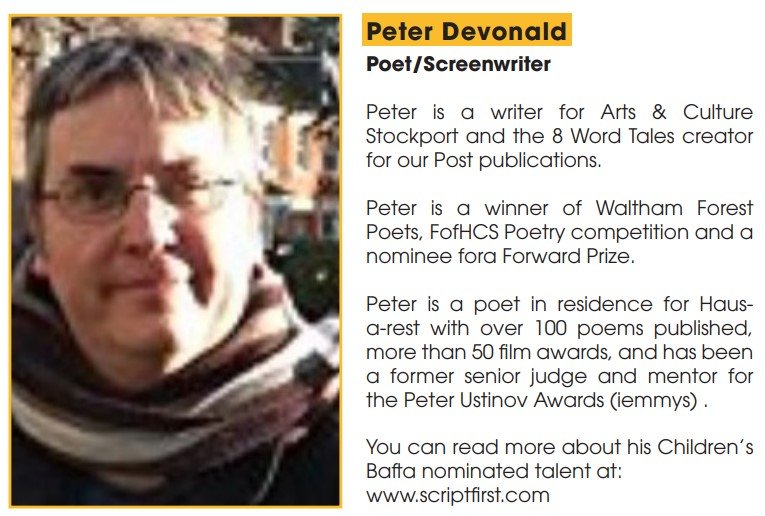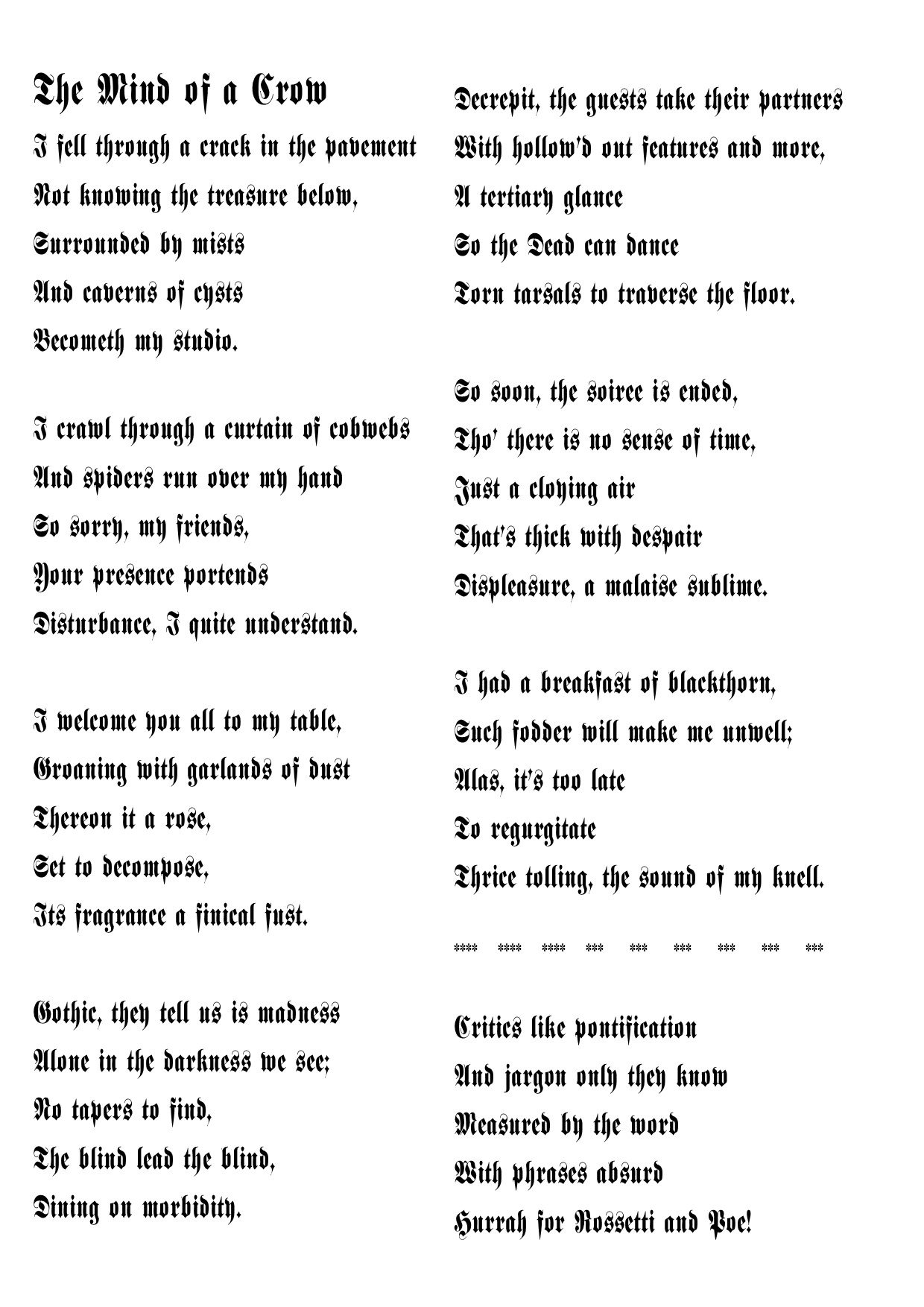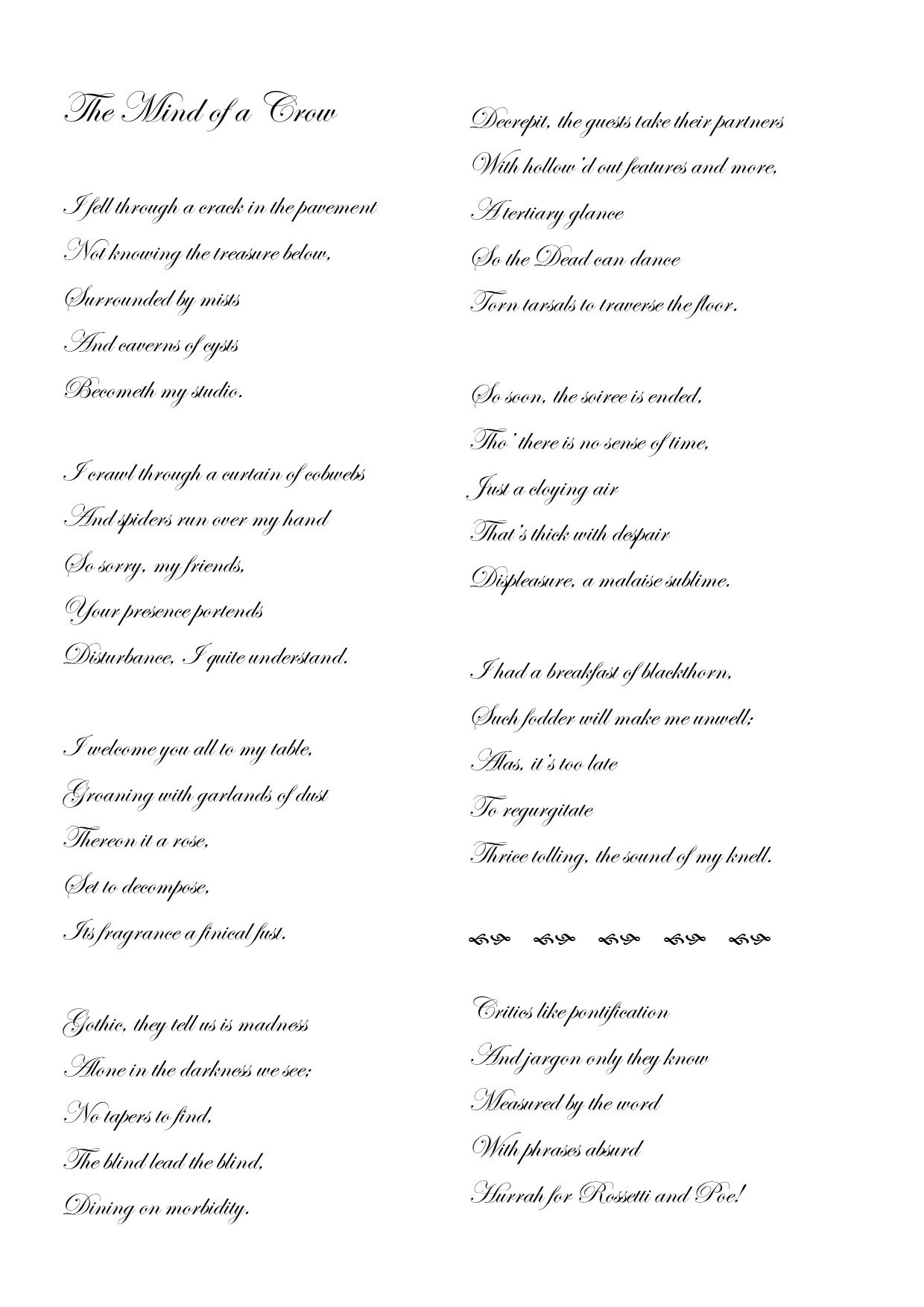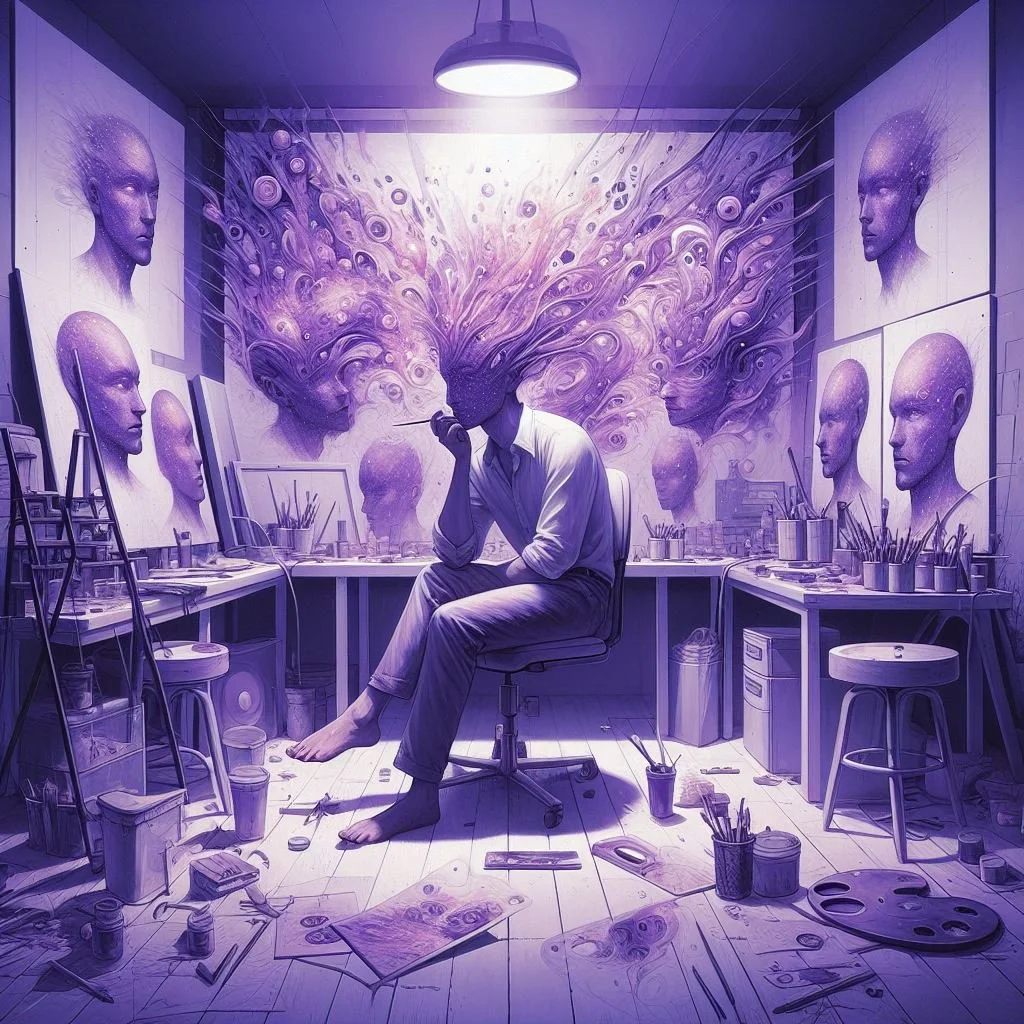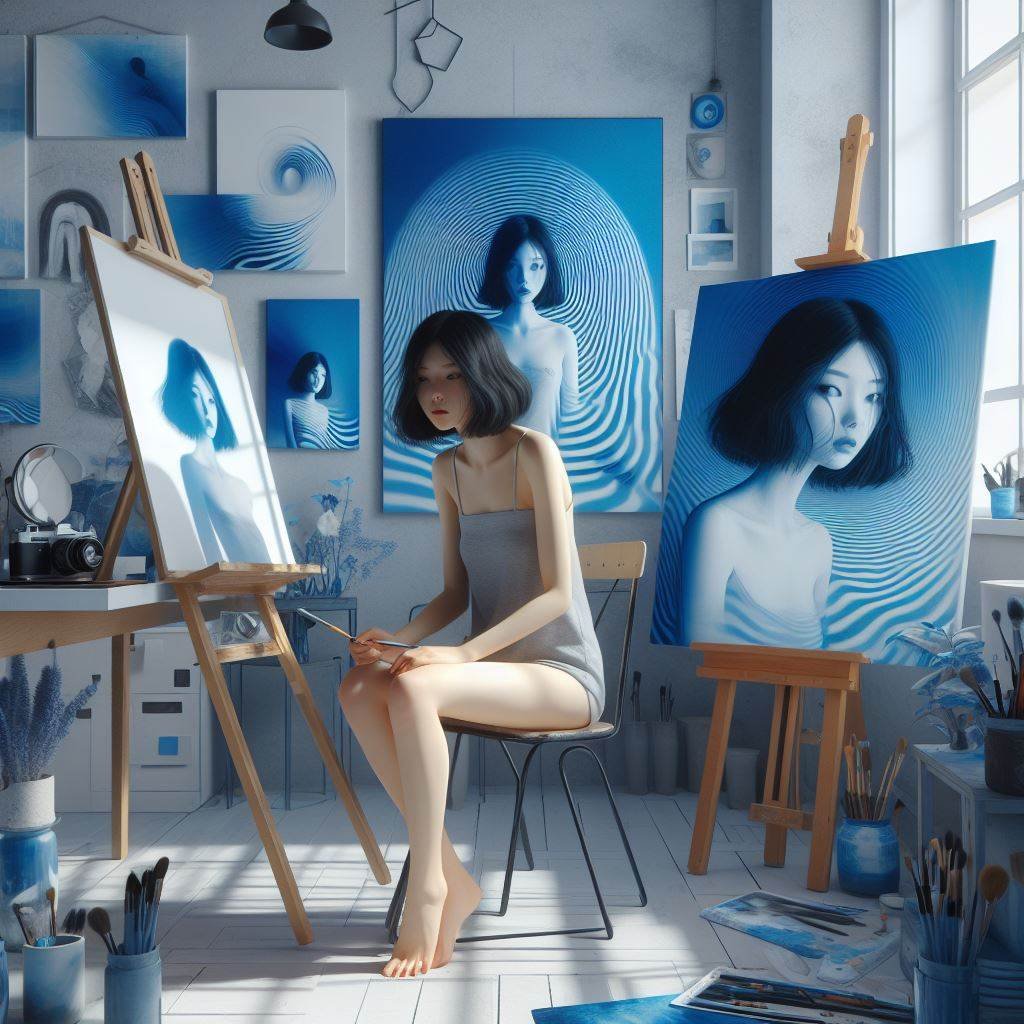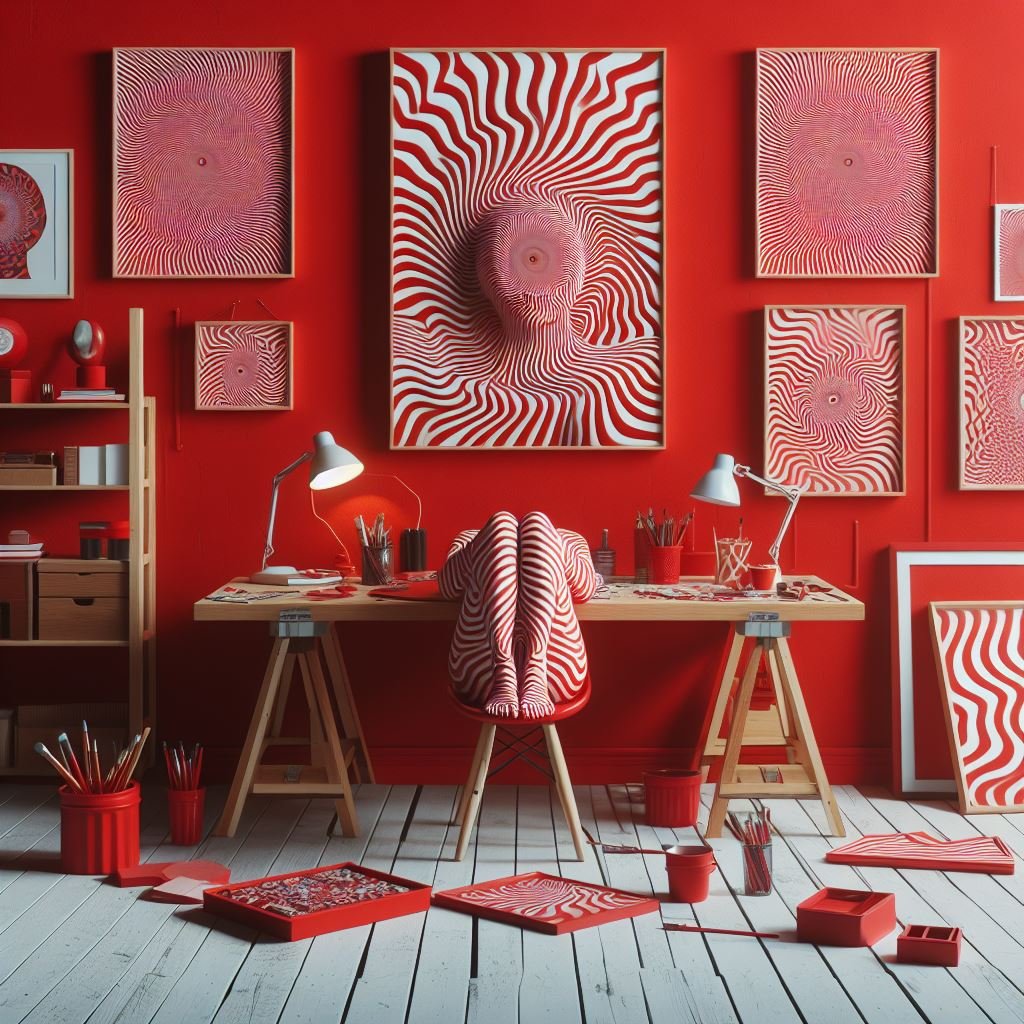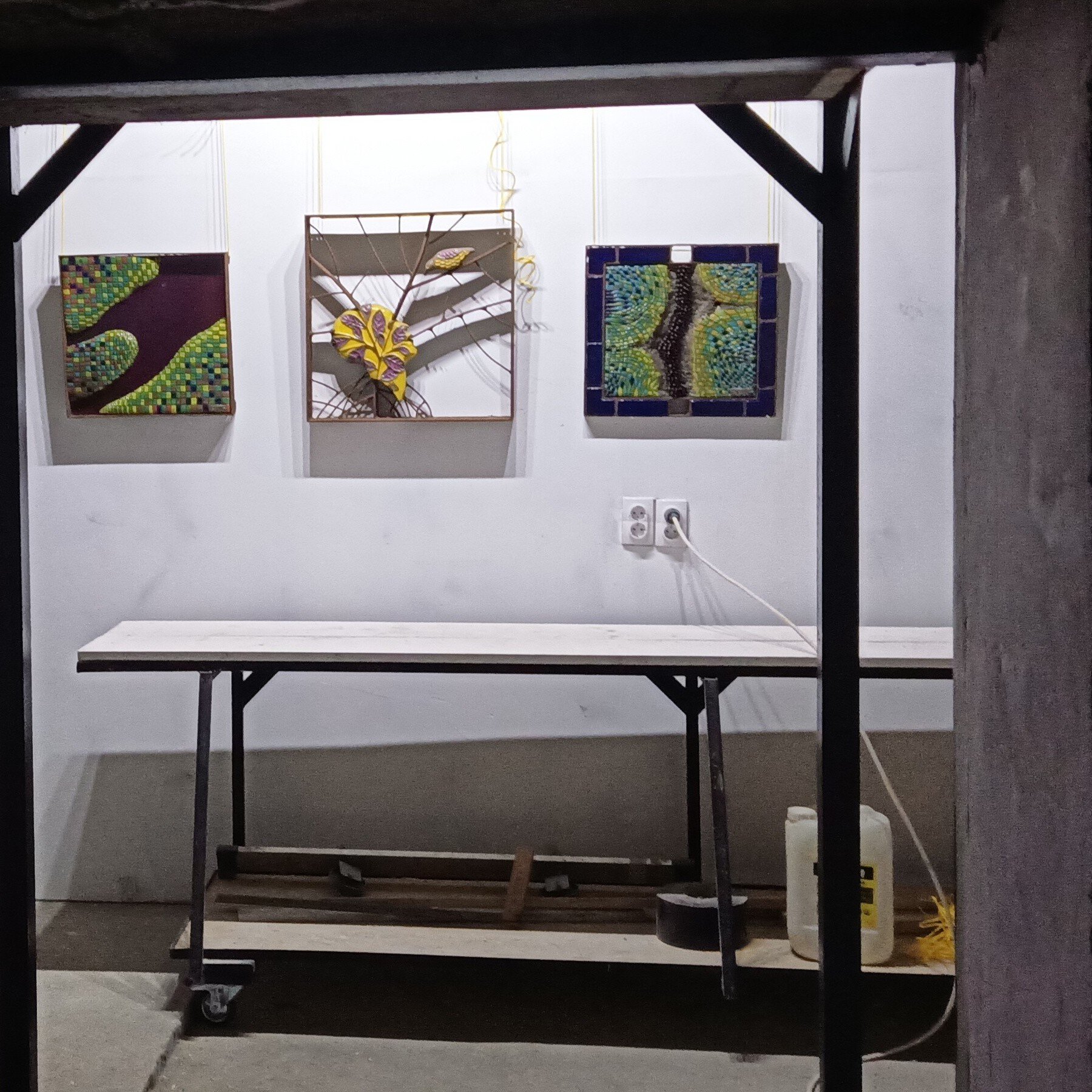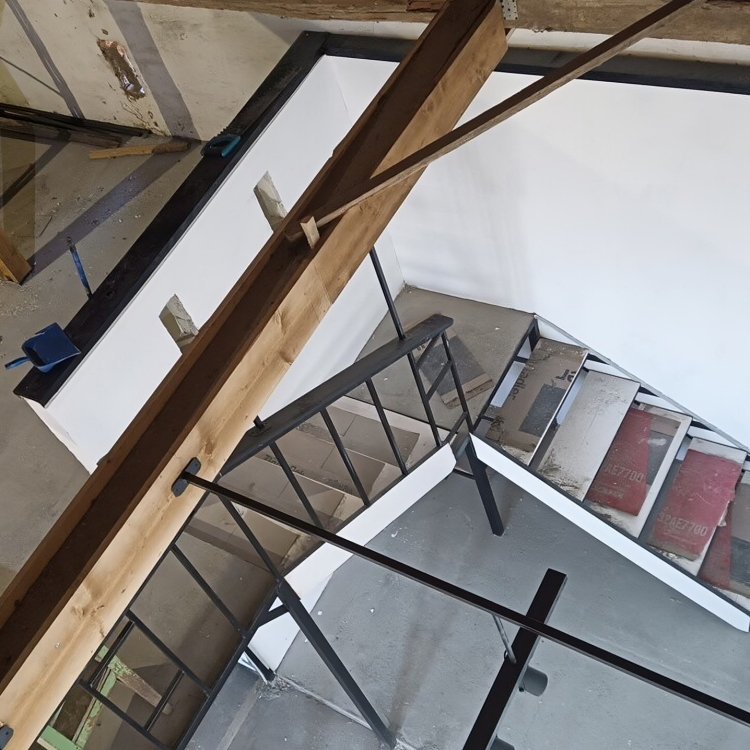The writer’s section this week is slightly smaller and more contextualised, we have just a few artists and writers who wish to explore their studio spaces and work in the written form…
A fab Q&A with our resident poet about his writing process…
Writing Process: Peter Devonald
What items are on your writing desk?
Cup of tea. Essential. Used to be something more alcoholic but long since passed those times. Try to have a clear desk but life often gets in the way – always print-outs of poems, rewrites, projects developing. Keys! Phone. Camera. Spare glasses. A memory of a fall, a long time ago. Printer waits whispering desires. Dandelion paperweight. Lego Shakespeare muttering he did it better. Papers I need to sort. Pens and pens and pens.
Do you listen to music when writing?
Poetry tends to be silence. Screenwriting used to be music that fits the work to add pace and momentum. If writing up changes then maybe James or orchestral. Strange how it changes – I suppose poetry is so condensed writing so all the senses matter in the moment.
What gets you out of a writing slump?
Living. Reading. Change of scene, meeting people. Listening to the world and others. Amazing how poetry comes from the simplest of things. The ‘what if’ is everywhere. Never can really tell where writing will come from or how it will go – always a sort of spiritual/ dream dynamic sense to it all rather than purely conscious.
How long do you spend writing versus editing?
My writing process is to handwrite (illegibly!), type up, rewrite, print, rewrite on paper, type up – final check. I have always been a better writer than rewriter. The first draft tends to have most of what I want – rewriting is more cutting down, reducing, like creating a good stock in cooking. Distance helps a great deal in rewriting – but doesn’t always suit the urgency of wanting to get work out.
Do you have any rituals around writing?
I wonder if all poets are (or become) slightly OCD – checking work forever in patterns, reading out work, checking, checking. I always read the work – always find the hidden stumbles and flaws that way.
Performance Artist Studio: by Maya Rivers…
In the heart of the bustling city, tucked away in a converted warehouse, lies the studio of Maya Rivers, She is a performance artist. Upon entering, one is immediately struck by the raw energy pulsating within the space. The walls are adorned with photographs capturing moments of Maya's past performances—suspended in mid-air, covered in paint, or engaging with various props.
The studio itself resembles a stage, with a bare, wooden floor space surrounded by towering mirrors that reflect every movement. In one corner, a rack holds an array of eccentric costumes and props, from shimmering sequined dresses to bizarre masks and oversized props. A vintage record player sits in another corner, its melodies often providing the soundtrack to Maya's creative process.
Scattered around the room are remnants of past performances—a splatter of paint here, a discarded script there—each telling a story of artistic exploration. The atmosphere is charged with anticipation, as Maya and her collaborators prepare for their next immersive experience, where boundaries blur, and art transcends the conventional.
She tells us how her performances are created by the space she encompasses and how each moment is informed by the previous performance, never quite knowing what will happen next…
>>>>>>>>><<<<<<<<<<<<
Artist - Harry Levene
Instagram account
Description
The work without the image; can it stand without depiction?
The mind as the studio; is there a need for a physical space? (which I use daily)
(no particular obstacles to overcome)
These questions are allied and recur before and when making work. What is the most appropriate way to present this piece or theme?
The answers lie simply in the wish or need to manufacture. If they pertain, a physical space is required. Starting as a graphic designer with an interest in typography, exploring the relationship between words and images is a continuing theme. Words themselves were the images in early works. New technology changes the nature of the studio, with the possibility of electronic transmission. What do you need other than, maybe, a chair? But that doesn’t have to be in a dedicated space. Spaces can change at will.
The question then becomes “Which environment is most conducive to creativity?” Is it one where the artist is “at home”?
>>>>><<<<<
Artist - Gabriel Laurent
Nestled in the tranquil countryside, amidst rolling hills and whispering trees, lies my sanctuary. I’m a fine art painter whose canvases evoke emotions that words cannot express. My studio becomes a haven of creativity, filled with the intoxicating scent of turpentine and linseed oil.
Large windows bathe the space in natural light, casting gentle shadows on rows of easels displaying works in progress. Splashes of colour adorn every surface, from the vibrant pigments scattered across the palette to the delicate brushstrokes that dance across canvases of all sizes. The walls are adorned with sketches and studies, each capturing a fleeting moment of inspiration. Shelves groan under the weight of art books and jars of brushes, while the faint strains of music provide a soothing backdrop to my artistic endeavours.
Here, time seems to stand still as I lose myself in my craft, each brushstroke a testament to my passion and dedication. In this tranquil oasis, art comes to life, revealing the beauty that lies beyond the confines of the tangible world.
<<<<<>>>>>>>>
Artist - Tomas Lagunavicius
Media - Digital art
Instagram account - https://www.facebook.com/profile.php?id=100008179871430
Description
The modern trend to aestheticise the world extends to all aspects of human life: clothes, machines, houses, workplaces, and so on. We are shaped by various standards of what things should look like: minimalism, eclecticism and so on. But what should an artist's studio be like, where he creates art objects? If he works in a modernist way then everything should be in order, but if he is a postmodernist then everything is deconstructed, and if it is a meta-modernist studio then there could be different elements. Now let's try to imagine a futuristic art studio. Could it be like that? And what do you think?
>>>>>>>><<<<<<<<<<<
Artist - Seraphina
My mind is my studio…
In the bustling cityscape, amidst the concrete jungle where dreams are often overlooked, resides the enigmatic artist known only as Seraphina. Unlike traditional artists who rely on physical spaces, Seraphina's studio transcends the confines of brick and mortar—it exists within the labyrinthine corridors of her mind.
Step inside the ethereal realm of Seraphina's imagination, where reality and fantasy intertwine in a delicate dance of creativity. Here, every thought is a brushstroke, every emotion a hue, and every memory a stroke of genius waiting to be unveiled.
In this intangible studio, the walls can be painted with any vibrant landscape, where stars shimmer like diamonds against an endless expanse of velvet sky. Majestic creatures, born from the depths of Seraphina's subconscious, roam freely through enchanted forests and mythical realms, their presence palpable in the air.
But it is not just fantastical landscapes that come to life within the confines of Seraphina's mind. Here, emotions take shape as swirling vortexes of colour, each one a masterpiece in its own right. Love, sorrow, joy—they all converge in a kaleidoscope of sensation, weaving together to form the tapestry of Seraphina's artistic vision. her mind breathes life into her visions, transforming the mundane into the extraordinary.
In the heart of the city, amidst the chaos and clamour, Seraphina's creations stand as beacons of wonder—a testament to the boundless power of imagination and the limitless potential of the human mind.
>>>>>><<<<<<<
Artist - Innokenty Sharkov
Instagram account @innsharkov
Description
I once read about Picasso, who moved whenever his studio got crowded, leaving behind many spaces. Though I'm no Picasso, I feel those spaces growing with me. My first studio was in Mariupol, my grandmother's place, where rats roamed and a cherry tree stood in the courtyard.
Later, I built a workshop in the Moscow region. What's needed for normal work? Light, chairs, a table, shelves, a lathe, and a stove. Peace, freedom, and order. But it's easier said than done.
Now I'm on a farm in Serbia, which I call "ivica sveta" — edge of the world. Turning it into a workshop is like converting a good combine into a passenger bus. I want to combine past achievements and create a space free from routine — a vacation spot. Because a vacation is time of freedom, and place of freedom.
Ernst Neizvestny spoke of ugly sounds like material being torn or a shell exploding. But no one talks about disharmonious space. It affects us greatly. So here I am, starting anew on the "edge of the world." And to begin with, I just want to plant a walnut tree in the middle of the yard that will break the brick horizontal of the yard.
>>>>>>><<<<<<<<<<


